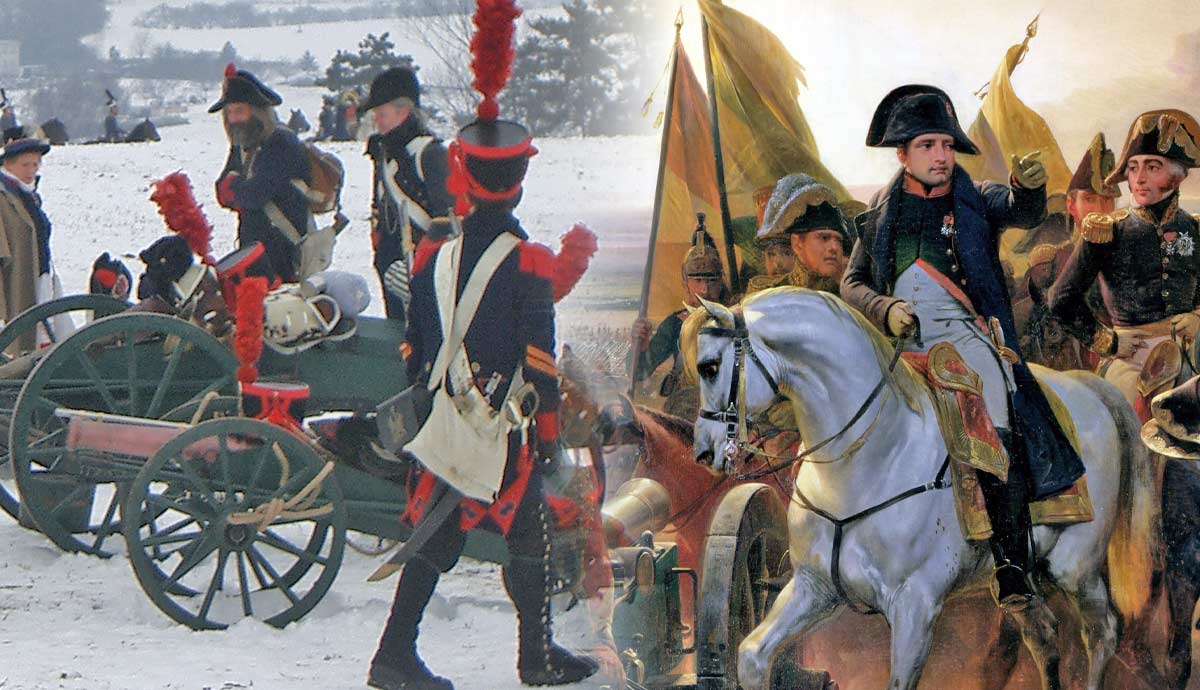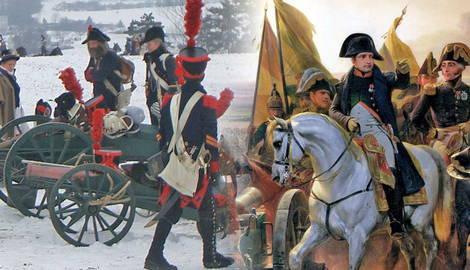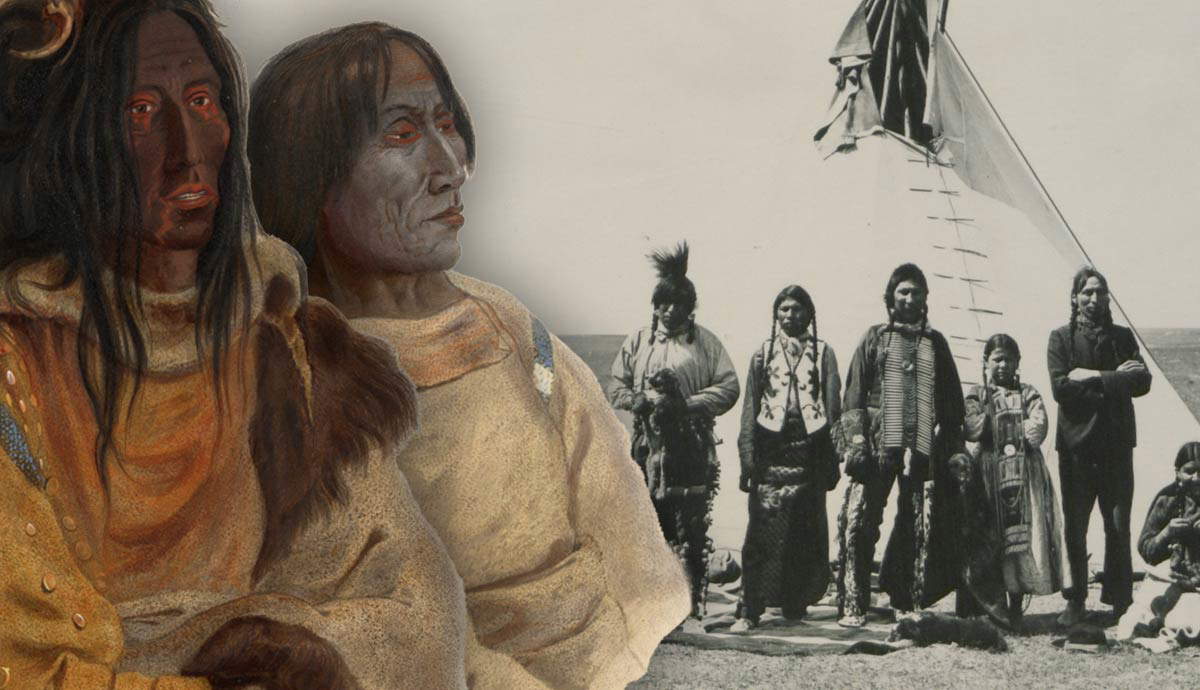
It is perhaps no surprise that having earned his first commission in the military as an artillery officer in 1785, Napoleon Bonaparte depended a great deal on the effectiveness of his guns on the battlefield. Greatly influenced by several innovative French military thinkers and practitioners, Napoleon transformed his artillery into a more mobile and decisive force on the battlefield. In many of his battles, it would be artillery, rather than musketry, that would decide the outcome of the engagement.
The de Vallière System

In order to contextualize the Napoleonic approach to artillery, it is important to understand the doctrines and systems that preceded Napoleon’s rise to the top of the military and political hierarchy, starting with the de Vallière system. Jean Florent de Vallière became the French Director-General of the Battalions and Schools of the Artillery in 1726, and his system prevailed for much of the century. His son, Joseph Florent de Vallière, was appointed to the same post in 1747 and continued to apply his father’s system.
De Vallière implemented important measures to improve and standardize the production of French artillery pieces. Crucially, he standardized the sizes of French artillery, which now included twenty-four-pounder, twelve-pounder, eight-pounder, and four-pounder cannons, as well as mortars in twelve-pounder and eight-pounder configurations.
The de Vallière system was a step up in terms of technological progress. The newer guns were more precise and could be produced with greater ease due to standardization efforts. The cannons were made to be longer and thicker, which facilitated greater range and the use of more powerful charges.
However, as René Chartrand points out in Napoleon’s Guns 1792-1815, the tactical deficiencies of this system became apparent during the War of the Austrian Succession (1740-1748) and the Seven Years’ War (1757-1763). French artillery performed well during sieges, which de Vallière prioritized as their primary function, but they lacked the mobility to be effective in field battles.
“Reds” vs. “Blues:” Artillery Doctrine & Resistance to Change

Despite the existential imperative to innovate and evolve in war, militaries can be notoriously resistant to change, and the French were no different in this regard during the 18th century. Although the de Vallière system had proven robust in the first half of the century, French defeats during the Seven Years’ War demonstrated the urgent need for reform.
The Austrians and later Prussians—who modeled their artillery on the Austrian system—were finding greater success on the battlefield with lighter guns and a doctrine that placed greater emphasis on maneuverability. The introduction of interchangeable parts also helped to make production and logistics more efficient.
Meanwhile, the French remained wedded to the de Vallière system, which emphasized power, range, siegecraft, and counter-battery fire. Despite the evidence that this approach was outdated and tactically inflexible, the younger de Vallière ensured that his father’s system endured, and change was sluggish until his death in 1776.
Nevertheless, debate between French artillery officers did exist in this period. There were two factions: the “Reds,” who supported the de Vallière system, and the “Blues,” who “sought a lighter, standardized, and more mobile ordnance system used to target the enemy’s troops.”
Gribeauval‘s Reforms

One such “Blue” was Jean-Baptiste Vaquette de Gribeauval, and his reforms would largely set the foundations for the more effective use of artillery by Napoleonic armies. Gribeauval was greatly influenced by his service with Austrian and Prussian forces during the Seven Years War. During this time, he served under Joseph Wenzel I, Prince of Liechtenstein, who had been reforming the Austrian artillery since 1744 based on lessons learned from the Austrian War of Succession. Liechtenstein’s reforms emphasized maneuverability, and he introduced lighter standardized guns for use in the Austrian army.
Gribeauval returned to France with these reforms in mind. Upon becoming the Inspector of the French artillery, he began to implement his own system in the mid-1760s. Like Liechtenstein, Gribeauval further standardized the French guns and opted for lighter models that could be maneuvered more easily. In 1764, he introduced a new range of four-pounder, eight-pounder, and twelve-pounder cannons, as well as a six-inch howitzer.
Crucially, Gribeauval was able to lessen the weight and length of his guns while maintaining their precision. For example, the weight of a four-pounder cannon was reduced from 1,300 pounds to just 600 pounds. The cartridges were also made smaller. The result was that fewer horses and men were needed to move a single artillery piece, which granted commanders greater tactical flexibility to deploy them on the battlefield. As Bruce McConachy explains in his article “The Roots of Artillery Doctrine: Napoleonic Artillery Tactics Reconsidered” (2001), “Guns could now be transported across obstacles as easily as a small cavalry troop, or moved as quickly as infantry.”
Guibert’s Artillery Theory

Another military theorist who influenced Napoleon was Jacques-Antoine-Hippolyte, comte de Guibert. He served in the French army alongside his father in 1756 and published several military treatises in the 1770s, including the famous Essai général de Tactique.
In The Background of Napoleonic Warfare: The Theory of Military Tactics in Eighteenth-Century France, Professor Robert Quimby writes that Guibert’s position on the use of artillery struck a balance between the argument raging between the Reds and Blues. In Guibert’s view, the artillery was an accessory to the infantry and cavalry because it could not operate independently; however, Guibert also argued in favor of more mobile artillery and felt that armies over-encumbered by static gunnery would benefit from a more maneuverable approach.
Crucially, Guibert also argued in favor of massing the artillery and using it to pound enemy infantry and cavalry rather than as a dispersed counter-battery tool used to target the other side’s artillery. As McConachy writes,
“Guibert saw that to facilitate victory, the artillery’s role should be to support and sustain friendly troops, to bombard important positions in preparation for an assault, and to strengthen weak portions of the battle line. Because of the inaccuracy of individual guns, Guibert believed that to have a decisive effect, many guns would be needed to bring concentrated fire onto a large area occupied by masses of troops.”
Mobile Gunnery

The Blues’ approach to artillery started to gain ground in the late 18th century, and the Gribeauval system was first battle-tested in the 1790s during the French Revolution. It proved successful, especially due to the increased mobility afforded to the artillery by lighter guns and the introduction of horse artillery. The horse artillery attached their cannons to two-wheeled carriages called limbers, which were drawn by horses. The artillerymen were also mounted and could quickly reposition their guns to different points on the battlefield.
Horse artillery was particularly impactful when used in conjunction with cavalry. The presence of cavalry would typically force enemy infantry to form a square formation in case they were charged. This densely packed formation was excellent at repelling mounted soldiers, but the proximity of the men to one another made them vulnerable to artillery. Once the enemy infantry had formed a square, the French artillerymen would quickly unlimber their cannons just outside of musket range and fire canister shot at the bunched-up infantry, causing high casualties.
The Gribeauval system demonstrated its effectiveness at the Battle of Valmy in September 1792, the Battle of Wattignies in October 1792, the Battle of Altenkirchen in June 1796, the Battle of Rastadt in July 1796, and the Battle of Biberach in October 1796.
The du Teil Brothers and Napoleon

The du Teil brothers, Jean-Pierre and Jean, like Gribeauval, were proponents for change and would likewise have a lasting impact on Napoleon’s approach to the use of artillery.
Jean-Pierre met Napoleon at the artillery school in Auxonne, where the former had been appointed commander in 1777. Jean-Pierre tutored the young Napoleon, who was a lieutenant at the time, on the implementation of the Gribeauval system. He evidently judged Napoleon competent and tasked him with overseeing experiments exploring the feasibility of firing mortar shells from cannons. Napoleon produced two memoirs for Jean-Pierre on the topic.
After his time in Auxonne, Jean-Pierre secured two more high-profile appointments, notably as chief of the artillery of the Armée du Rhin in 1792 and inspector general of the artillery of the Armée des Alpes in 1793. However, he became a victim of the French Revolution and was executed as a traitor in 1794.
Jean du Teil was also a highly respected officer and was successively made commander of the artillery in three French armies. Like his brother, Jean was a proponent of the Gribeauval system and rubbed shoulders with Napoleon. Commenting on his influence over the latter, Major Justin G. McBride writes, “Napoleon, like Jean du Teil came to believe the artillery should concentrate its fire at a single point to create gaps in the enemy’s line. Once the enemy’s line was broken, the equilibrium of the battle was broken, and the remainder of the fight was easy.”
Napoleon’s Artillery

Other military practitioners and theorists had laid the groundwork for more mobile gunnery, but it would be Napoleon who would form the artillery into a decisive arm of battle. Previously, artillery had been used in a supporting role, with the infantry and cavalry landing the decisive blows in battle. Napoleon, however, drawing inspiration from other innovators, began using artillery more decisively.
According to Major McBride, “Through his foundational artillery education and the influence of teachers, writers, and mentors, Napoleon developed a theory of artillery application that intended to inflict casualties and create gaps in the enemy’s ranks through massed fires, which would then be exploited by shock forces.”
Whereas commanders had previously dispersed their artillery amidst the ranks and focused on counter-battery fire (targeting enemy artillery), Napoleon massed his artillery at advantageous points on the battlefield to increase the effect of their firepower and focused their fire against enemy infantry and cavalry.
Implementation & Reorganization

Implementing this new approach to artillery, based on the innovations of Guibert, Gribeauval, and the du Teil brothers, would take time. Formal command structures and established procedures would have to be imposed on the artillery corps. In 1799, not long after Napoleon had become First Consul, he formed a large army artillery staff under his direct supervision. The artillery staff was responsible for overseeing the organization of artillery schools, managing the production of munitions and weapons, and the provision of fortress defenses.
In 1806, Napoleon reorganized the artillery’s integration with the rest of the army. Each infantry division was assigned one foot and one horse artillery company. Meanwhile, light cavalry divisions were assigned one company of horse artillery, and heavy cavalry received two. To every corps was also attached a reserve of artillery, including two-foot companies and a horse company. At least one of the foot companies always came equipped with twelve-pounder cannons.
According to Antoine-Henri Jomini, a military theorist frequently compared to Clausewitz, Napoleon was even more determined to bolster the capabilities of his artillery after the Battle of Eylau in February 1807, fought between the French and Russians. The Russians had far more guns than the French and deployed them in masses to concentrate fire. During the battle, the Russian artillery hammered the French lines, softening them up for a cavalry charge. In just 30 minutes, an entire French corps was decimated. Henceforth, Napoleon aimed to maintain a cannon-to-troop ratio of 5:1,000, although he was only able to achieve a ratio of 3.3:1,000.
In Battle

Later, in 1807, the French artillery inflicted devastating losses upon the Russians at the Battle of Friedland on June 14. During the battle, one of Napoleon’s officers, Alexandre-Antoine Hureau de Sénarmont, Chief of Artillery for the First Corps, positioned thirty cannons within just 120 yards of the Russian infantry. The cannons unleashed canister shot upon the enemy for 25 minutes, greatly reducing their numbers and morale. This tactic was repeated successively in subsequent battles.
The artillery could fire canister shot accurately at ranges between 400 and 600 yards, whereas a shot fired from a musket could not travel further than 200 yards. This allowed the artillery to devastate enemy lines from a relatively safe distance before the infantry or cavalry moved in to finish them off.

Napoleon’s artillery again distinguished themselves at the Battle of Wagram on July 8-9, 1809. On the second day of the battle, Napoleon assembled a grand battery of over 100 guns over a two-kilometer stretch. The wet terrain meant that the cannonballs ricocheted, increasing their lethality. Entire Austrian infantry and cavalry files, sometimes up to 20 men, were eliminated with a single shot. The French also used canister shots at short range and advanced steadily, maintaining a relentless barrage until the Austrian counter-barrage forced them to slow down. After the battle, Napoleon told his artillery commander, Jean Ambroise Baston de Lariboisière, “at Eylau, you provided me with powerful support, but today you have won the battle.”
Napoleon’s artillery served with distinction until his eventual downfall at the Battle of Waterloo in 1815. He transformed the artillery into a decisive force on the battlefield so that commanders came to measure the strength of forces by the number of guns rather than the number of muskets.










